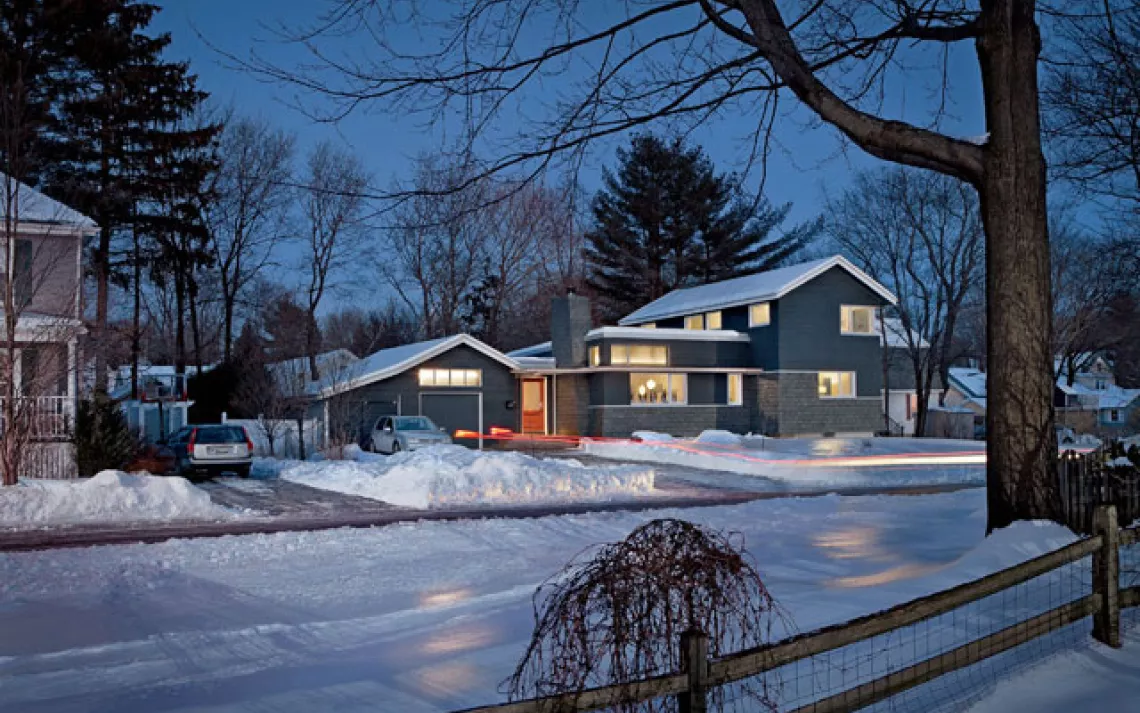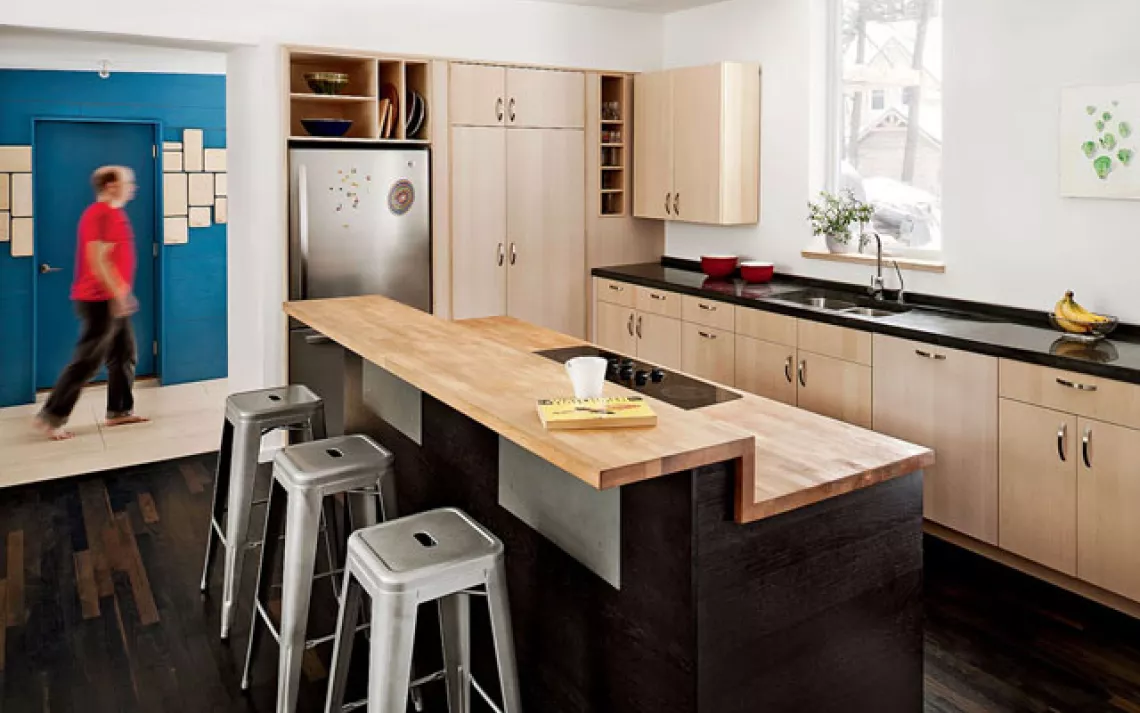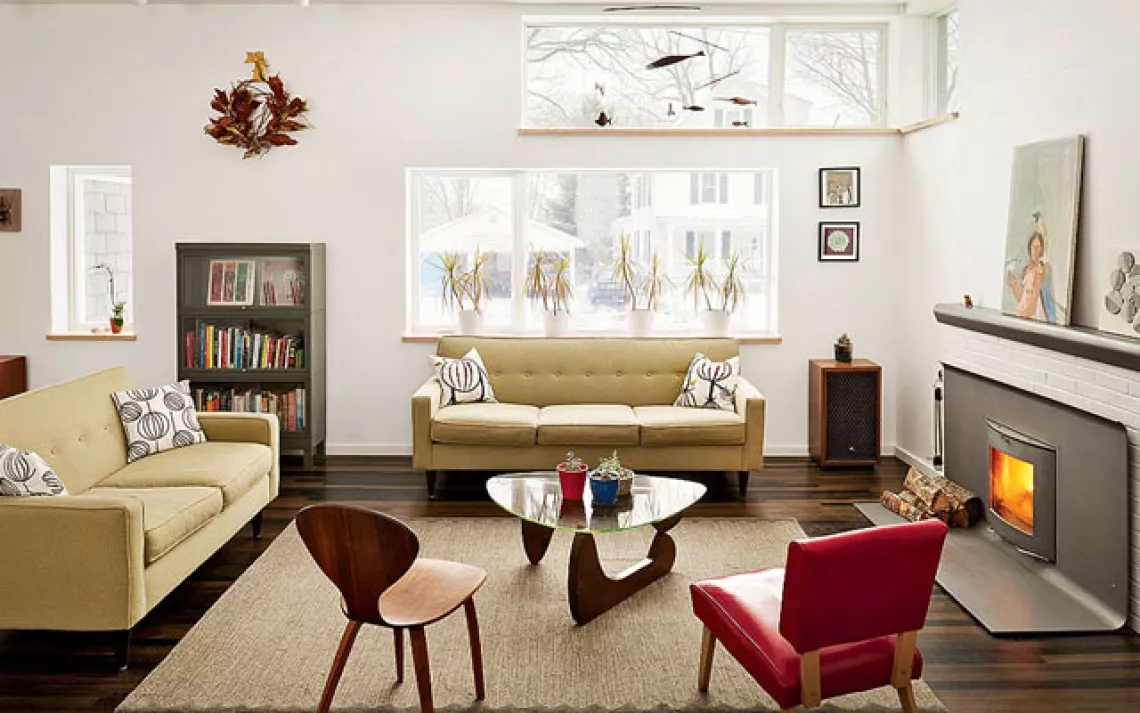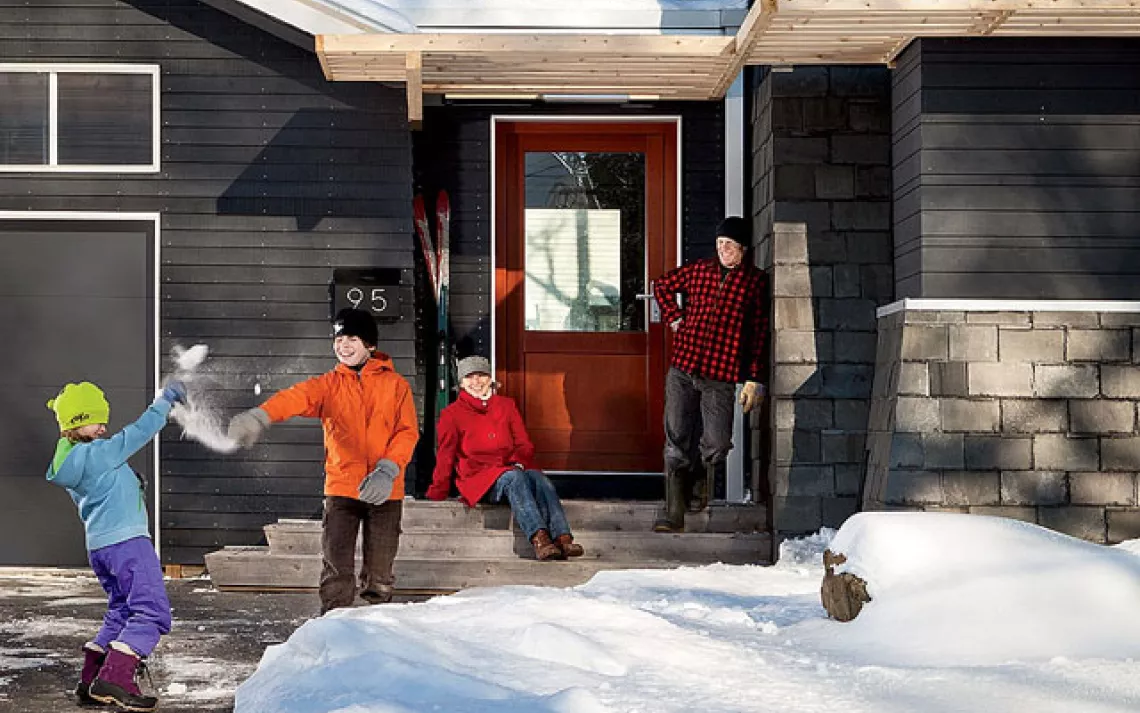Reenergized Ranch
Betsy Scheintaub says she first realized what it was like to feel warm on a winter's night about three years ago. That's when she and her husband, architect Jesse Thompson, finished renovating their 1960s house in Portland, Maine, into a supertight model of energy efficiency. "This just doesn't have the chill that most New England houses do," says Scheintaub, a fiber artist.
"In most houses around here, you need an extra sweater on winter nights. But this house actually stays warm."
Thompson, of Kaplan Thompson Architects in Portland, used his own home to experiment with techniques that he's since used for his clients, including wrapping six inches of used insulation around the house and then installing new siding over it. He also had insulation layered over the existing cellar floor and then had a new floor poured over that. The one-story ranch house was rebuilt into a sleek, two-story, three-bedroom dwelling that has a decidedly Scandinavian look.
The well-sealed house has a mechanical fresh-air ventilation system and a propane boiler for heat and hot water. The propane bills are $500 a year. "It's really a quiet house, since it's so tight and we don't have an oil boiler," Thompson says. "And I really like that."
The living room, dining area, and kitchen are all open to one another, taking up about 575 square feet, most of the footprint of the old house. The living room's 12-foot-high ceiling, which curves upward from the kitchen's lower ceiling, and its two large, stacked windows make the 1,900-square-foot home seem larger than it is. "With those windows going right up to the ceiling, you get this feeling of really being connected to the outside. You look at a tree and you see the whole tree," Scheintaub says. "People come over and say, 'Oh, it's so big in here,' but our house is smaller than a lot of people's."
The couple and their two children, ages 9 and 12, moved into the unrenovated house in 2008 and slowly started planning the rehab and gathering salvaged materials. The most unusual of those are probably the 1,000 square feet of slate roof tiles from an 1860s Maine barn. Thompson ended up using them as siding for part of the house and for the chimney. "Though I wish the two-year renovation could have gone faster," Scheintaub says, "we did have time to look for and find lots of great things."
ON THE WEB Tell us your idea of a green living or work space at sierraclub.org/sierra/shelter.
 The Magazine of The Sierra Club
The Magazine of The Sierra Club











